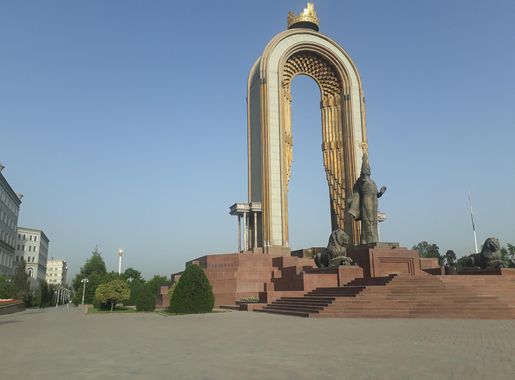
Dushanbe: Heart of Tajikistan
Discover Dushanbe: Tajikistan's capital, where Soviet-era charm meets vibrant Tajik culture amidst stunning mountain scenery and rich historical heritage.
Nestled in the heart of Central Asia, Dushanbe, the capital of Tajikistan, offers an intriguing blend of Soviet-era architecture and vibrant Tajik culture. The city is surrounded by picturesque mountains that provide a stunning backdrop to its bustling streets and serene parks. Visitors can explore the ancient history of the region, with many museums and monuments telling the story of Tajikistan's rich past. Take a leisurely stroll through Rudaki Park, named after the famed Persian poet, where you can relax among fountains and flowerbeds. The National Museum of Tajikistan is a must-visit, showcasing artifacts from the country's long history, including ancient relics and contemporary art. For those interested in local craftsmanship, the Green Bazaar offers a sensory overload of sights, sounds, and scents, with vendors selling everything from fresh produce to traditional handicrafts. Dushanbe's dining scene is a delightful surprise, ranging from traditional Tajik cuisine to international flavors. Don't miss the chance to try plov, a hearty rice dish, or sample fresh bread from the local bakeries. The city's tea houses, or chaikhanas, provide a perfect spot to unwind with a cup of local tea while soaking in the ambiance. With friendly locals and a relaxed pace of life, Dushanbe offers an authentic and memorable travel experience.
Local tips in Dushanbe
- Exchange your money at local banks or authorized exchange points for the best rates.
- Learn a few basic phrases in Tajik or Russian; it will go a long way in communicating with locals.
- Visit early in the morning or late in the afternoon to avoid the midday heat, especially in summer.
- Dress modestly, as Tajikistan is a conservative country with traditional values.
- Carry cash, as credit cards are not widely accepted outside major hotels and restaurants.
Neighbourhoods in Dushanbe
Dushanbe: Heart of Tajikistan
Nestled in the heart of Central Asia, Dushanbe, the capital of Tajikistan, offers an intriguing blend of Soviet-era architecture and vibrant Tajik culture. The city is surrounded by picturesque mountains that provide a stunning backdrop to its bustling streets and serene parks. Visitors can explore the ancient history of the region, with many museums and monuments telling the story of Tajikistan's rich past. Take a leisurely stroll through Rudaki Park, named after the famed Persian poet, where you can relax among fountains and flowerbeds. The National Museum of Tajikistan is a must-visit, showcasing artifacts from the country's long history, including ancient relics and contemporary art. For those interested in local craftsmanship, the Green Bazaar offers a sensory overload of sights, sounds, and scents, with vendors selling everything from fresh produce to traditional handicrafts. Dushanbe's dining scene is a delightful surprise, ranging from traditional Tajik cuisine to international flavors. Don't miss the chance to try plov, a hearty rice dish, or sample fresh bread from the local bakeries. The city's tea houses, or chaikhanas, provide a perfect spot to unwind with a cup of local tea while soaking in the ambiance. With friendly locals and a relaxed pace of life, Dushanbe offers an authentic and memorable travel experience.
When is the best time to go to Dushanbe?
Iconic landmarks you can’t miss
Rudaki Park
Explore Rudaki Park in Dushanbe: a lush green haven filled with iconic monuments, tranquil fountains, and vibrant floral displays, perfect for relaxation and cultural immersion.

Navruz Palace
Explore Navruz Palace, a stunning cultural center in Dushanbe, where modern architecture meets Tajik heritage, showcasing art and tradition.

Dushanbe Zoo
Explore the captivating Dushanbe Zoo, where wildlife conservation meets family fun in the heart of Tajikistan's capital.
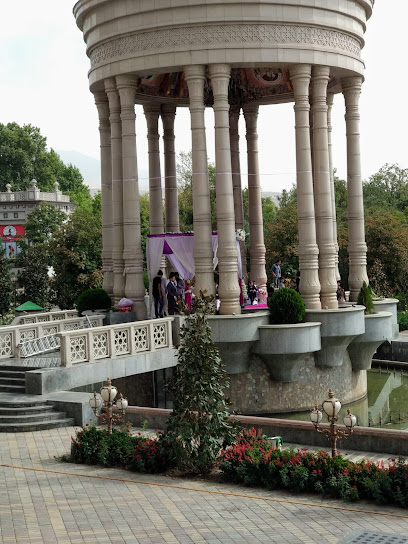
Victory Monument
Explore the iconic Victory Monument in Dushanbe, a symbol of resilience and cultural pride in Tajikistan's rich history.
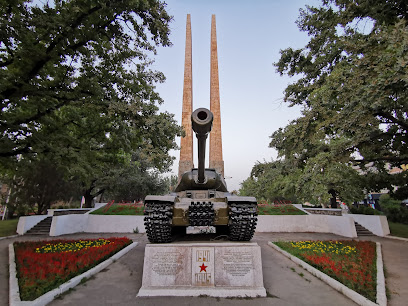
Flagpole
Explore the breathtaking beauty of the world's tallest flagpole in Dushanbe, Tajikistan, a symbol of national pride and stunning vistas.
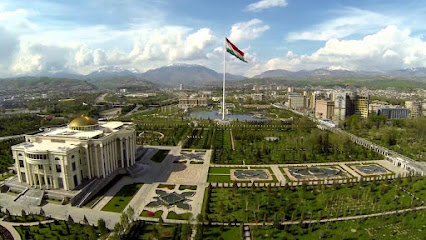
The Ismaili Centre, Dushanbe
Explore the serene beauty and cultural significance of The Ismaili Centre in Dushanbe, a peaceful haven reflecting the richness of Tajik heritage.

National Museum of Tajikistan
Explore Tajikistan's rich cultural heritage at the National Museum, featuring ancient artifacts and stunning exhibitions in Dushanbe.
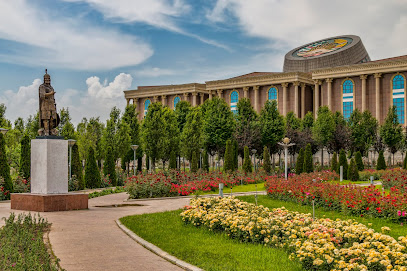
Hаji Ya'qub Mosque
Explore the exquisite architecture and serene atmosphere of Hāji Ya'qub Mosque, a must-visit spiritual attraction in Dushanbe, Tajikistan.
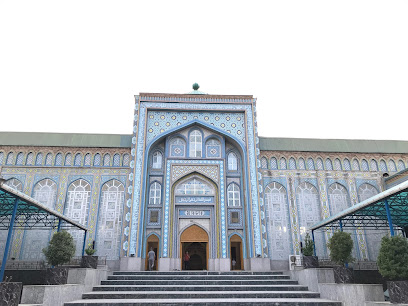
National Museum of Antiquities of Tajikistan
Explore the rich history and culture of Tajikistan at the National Museum of Antiquities, home to unique artifacts and the world's largest Buddha statue.
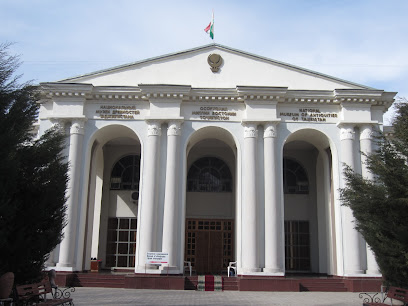
Independence Monument
Explore the Independence Monument in Dushanbe, a stunning tribute to freedom and national pride amidst beautiful gardens and rich history.
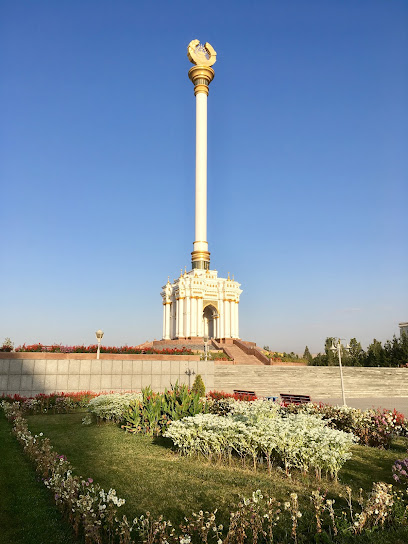
Luchob Memorial Park
Experience tranquility and history at Luchob Memorial Park, a serene tribute in Dushanbe, Tajikistan, perfect for reflection and leisure.
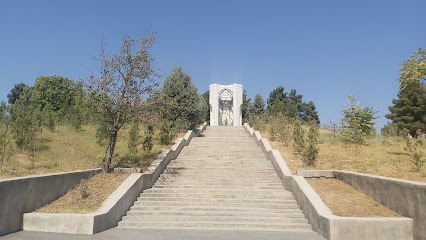
муҷассамаи Исмоили Сомонӣ
Discover the grandeur of Tajikistan's heritage at the Ismoili Somoni Monument, a stunning historical landmark in Dushanbe.
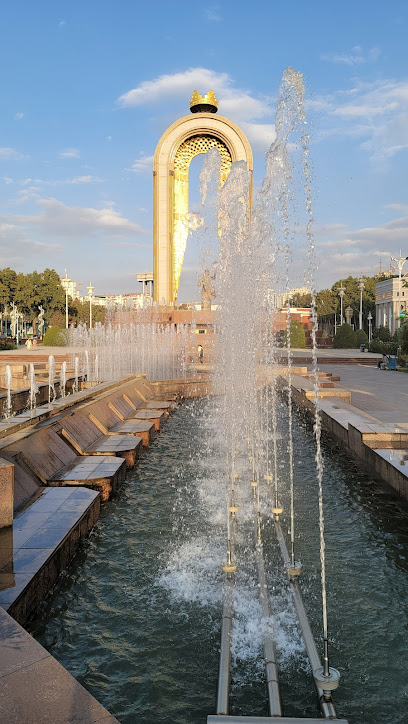
Avicenna Square
Discover the tranquility of Avicenna Square in Dushanbe, a beautiful park perfect for relaxation and cultural exploration amidst lush greenery.
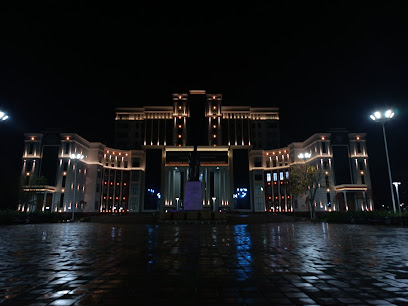
Rudaki Statue
Experience the cultural richness of Tajikistan at the stunning Rudaki Statue, a tribute to the country's beloved poet and a symbol of national pride.
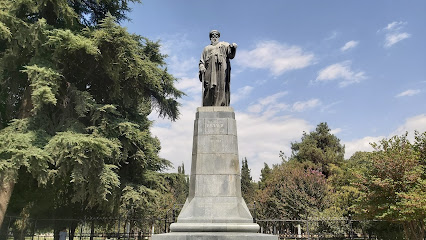
Avicenna soviet mosaic
Explore the Avicenna Soviet Mosaic, a magnificent display of art and history in Dushanbe, celebrating the legacy of one of the greatest minds in history.
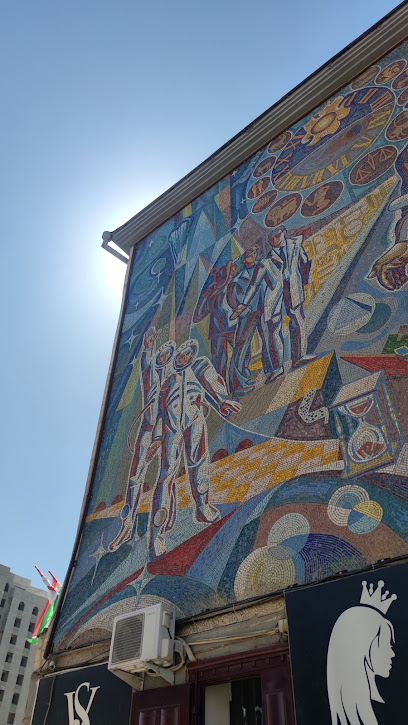
Unmissable attractions to see
Hisor Fortress
Explore Hisor Fortress, a breathtaking historical site in Tajikistan offering stunning views, rich culture, and a glimpse into the past.
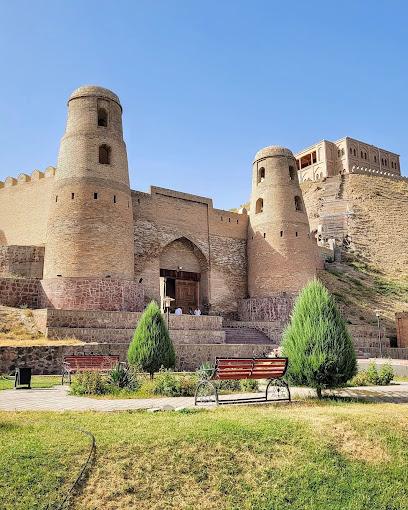
National Museum of Tajikistan
Discover the rich history and vibrant culture of Tajikistan at the National Museum of Tajikistan in Dushanbe.

Hаji Ya'qub Mosque
Explore the Hāji Ya'qub Mosque in Dushanbe, a stunning architectural masterpiece that embodies the rich spiritual heritage of Tajikistan.
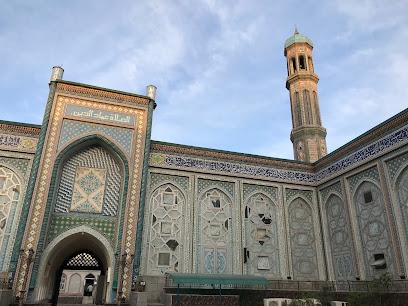
Shirkent National Park
Explore the stunning landscapes and rich biodiversity of Shirkent National Park, a nature preserve offering adventure and tranquility in Tajikistan.
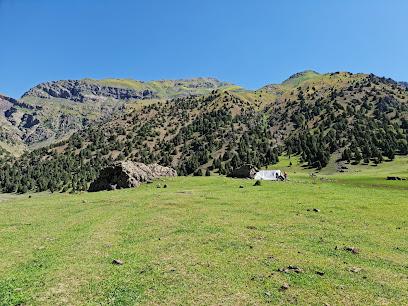
Varzob
Explore Varzob, a serene escape near Dushanbe, where stunning landscapes and refreshing waters await every traveler.
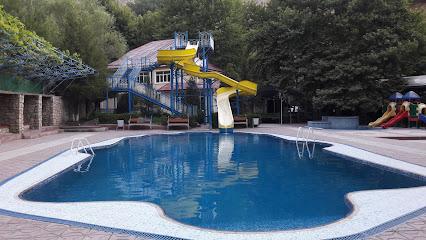
Monument Istiklol
Discover the Monument Istiklol in Dushanbe - a stunning tribute to Tajikistan's heritage that blends history with breathtaking architecture.
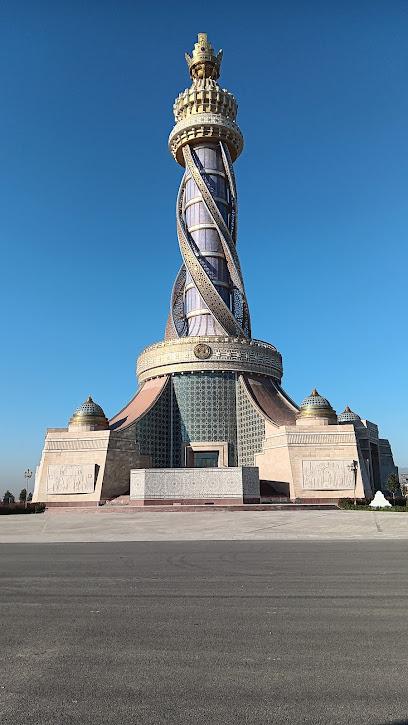
Essential places to dine
Merve Restaurant
Experience authentic Turkish flavors at Merve Restaurant in Dushanbe – where every meal is a celebration of taste and tradition.
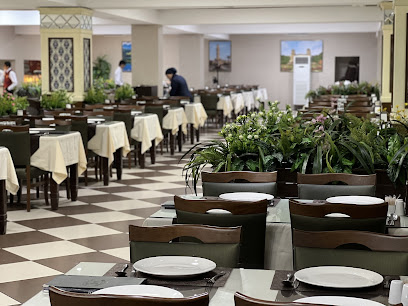
Bukhara
Discover the rich flavors of Tajik cuisine at Bukhara in Dushanbe – where tradition meets taste in every dish.
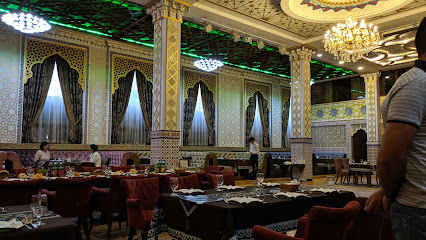
Toqi Teahouse
Experience authentic Tajik cuisine at Toqi Teahouse in Dushanbe – where tradition meets flavor in a warm and inviting atmosphere.
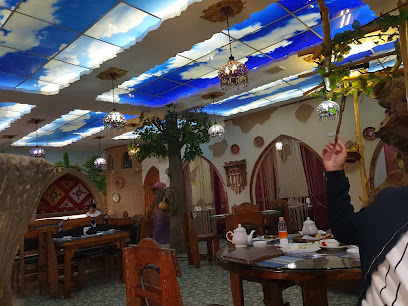
Restaurant Sharbat
Experience the rich flavors of Tajikistan at Restaurant Sharbat in Dushanbe - where tradition meets culinary excellence.
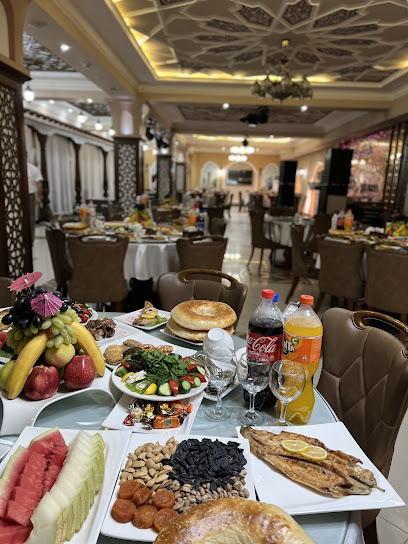
Sultanbey
Experience authentic Turkish cuisine at Sultanbey in Dushanbe - where every meal is a celebration of flavor and tradition.
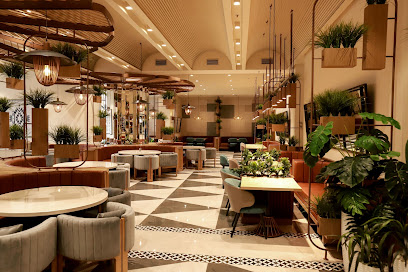
Delhi Darbar
Experience authentic Indian cuisine at Delhi Darbar in Dushanbe – where vibrant flavors meet warm hospitality.
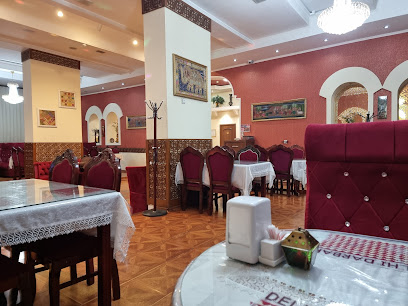
Il Patio
Experience authentic Italian cuisine at Il Patio in Dushanbe – where every meal feels like a trip to Italy.
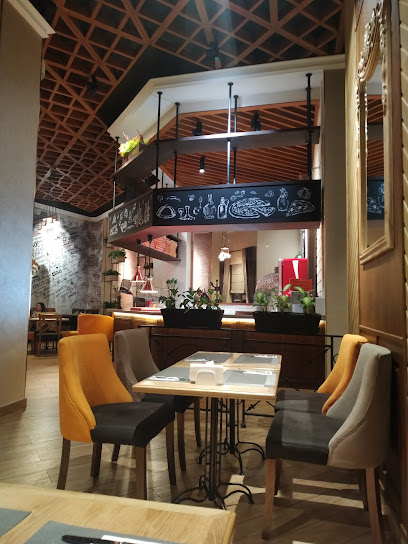
Arirang Kaya Korean restaurant
Discover the rich flavors of Korea at Arirang Kaya - a premier dining destination in Dushanbe offering exquisite Pan-Asian cuisine.
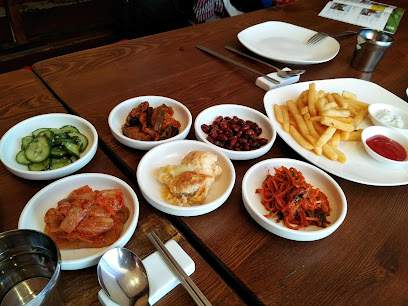
OK
Discover authentic Tajik cuisine in Dushanbe's premier restaurant with traditional dishes served in a warm atmosphere.
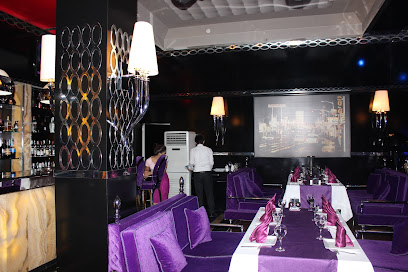
Steak House
Experience culinary excellence at Steak House in Dushanbe—where premium steaks meet exceptional service in an inviting atmosphere.
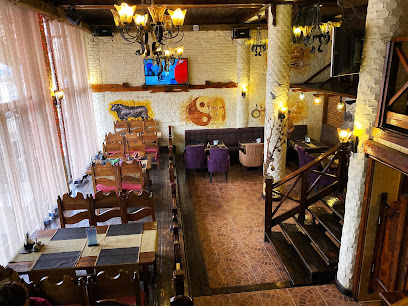
Rudaki House Restaurant
Experience the best of Tajik cuisine at Rudaki House Restaurant in Dushanbe—where tradition meets taste in every dish.
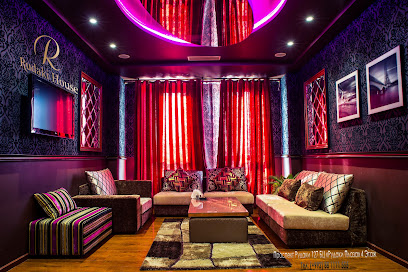
Zafar Restaurant
Experience authentic Tajik cuisine at Zafar Restaurant in Dushanbe - where tradition meets taste in a delightful dining atmosphere.
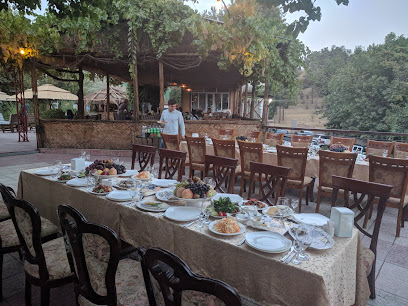
Chilli Restaurant
Experience the vibrant flavors of Tajikistan at Chilli Restaurant in Dushanbe - where delicious cuisine meets lively atmosphere.
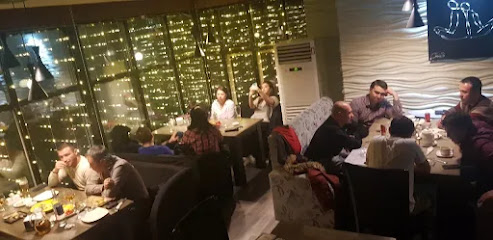
Omar Khayyam
Discover authentic Tajik cuisine at Omar Khayyam in Dushanbe—an unforgettable dining experience amidst rich cultural heritage.
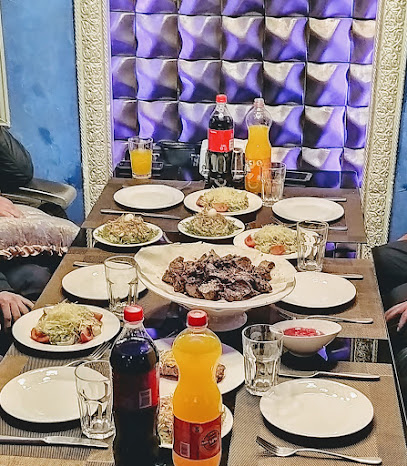
Yak Restaurant
Experience authentic Tajik cuisine at Yak Restaurant in Dushanbe – a must-visit for meat lovers seeking traditional flavors.
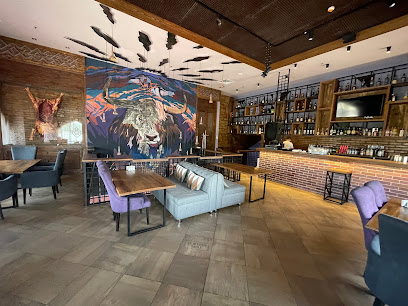
Markets, malls and hidden boutiques
Dushanbe Mall
Explore Dushanbe Mall, a shopping haven in Tajikistan, offering diverse brands, delicious dining, and family-friendly entertainment.
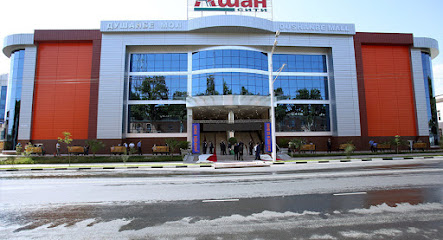
Sadbarg Trade Center
Experience the vibrant shopping scene at Sadbarg Trade Center, Dushanbe's premier destination for retail and local cuisine.
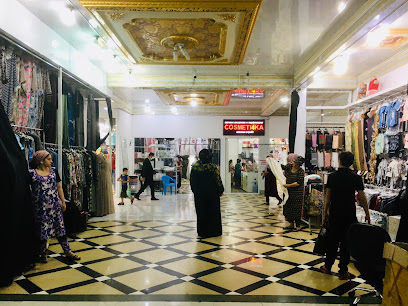
Paykar
Discover the vibrant shopping scene at Paykar in Dushanbe, filled with unique shops, delightful treats, and a taste of local culture.

Central Department Store
Explore the Central Department Store in Dushanbe for a unique shopping experience blending local culture with modern retail.
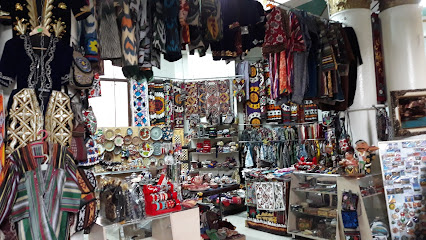
Siyoma Mall
Discover the vibrant shopping culture of Dushanbe at Siyoma Mall, featuring a mix of local and international brands, dining, and entertainment.
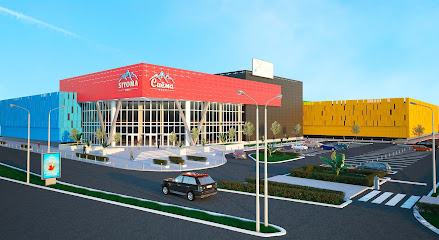
Jysk
Discover Jysk in Dushanbe for a diverse collection of home goods, from furniture to outdoor essentials, perfect for every traveler.
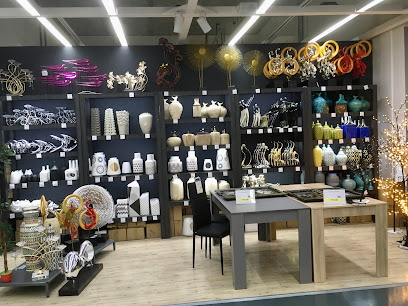
Jeffrey's Coffeeshop
Discover the cozy ambiance and exceptional brews at Jeffrey's Coffeeshop, a must-visit spot in Dushanbe, Tajikistan.
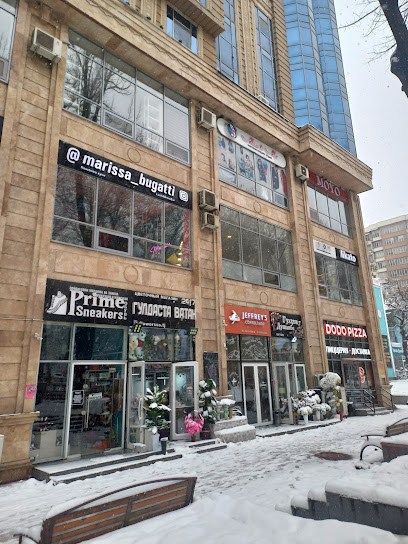
Grand baby shop
Explore the Grand Baby Shop in Dushanbe for a delightful selection of children's clothing and accessories that combine style and comfort.

Akika
Explore the exquisite jewelry and unique fashion accessories at Akika, the heart of Dushanbe's shopping experience.
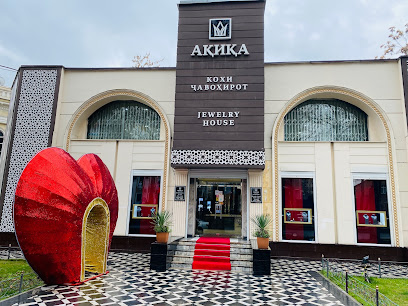
Noor Art Gallery
Discover the vibrant tapestry of Tajik art at Noor Art Gallery—where creativity meets culture in Dushanbe.
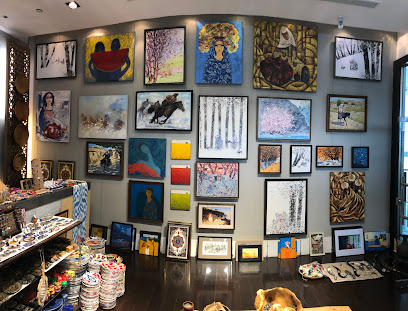
ALFEMO
Explore ALFEMO in Dushanbe for a unique selection of contemporary and classic furniture pieces that capture the essence of local craftsmanship.
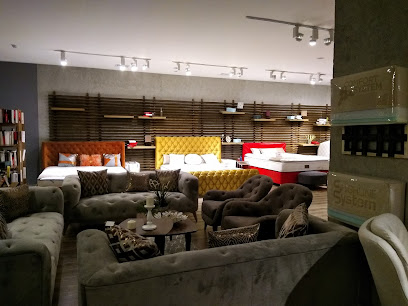
Korvon Market
Discover the lively Korvon Market in Dushanbe, where local culture, flavors, and craftsmanship come alive in a vibrant shopping experience.
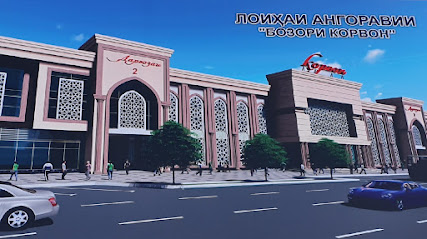
Embawood
Discover exquisite furniture craftsmanship at Embawood in Dushanbe, where tradition meets modern design in a stunning array of options.

Zoda Art Gallery
Explore Zoda Art Gallery in Dushanbe for unique local art and handcrafted souvenirs that embody Tajikistan's rich cultural heritage.
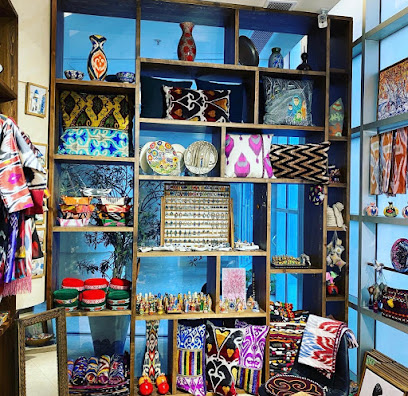
Tajikistan
Explore Tajikistan: A Hidden Gem of Stunning Mountains, Rich Heritage, and Vibrant Culture Awaiting Your Discovery.
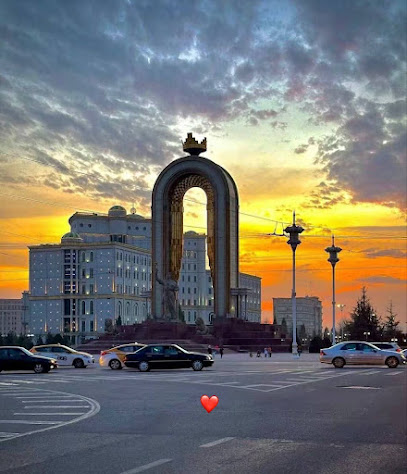
Essential bars & hidden hideouts
Best Bar City
Discover Dushanbe's top live music bar, a vibrant venue offering unforgettable performances, great drinks, and a taste of Tajik culture.
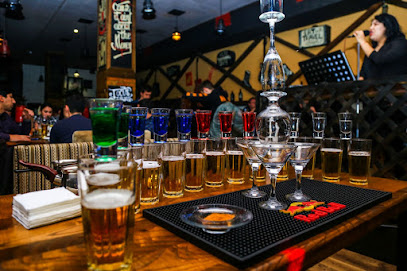
Sim Sim Pub
Discover the lively Sim Sim Pub in Dushanbe, where delicious food meets a vibrant atmosphere perfect for tourists and locals alike.
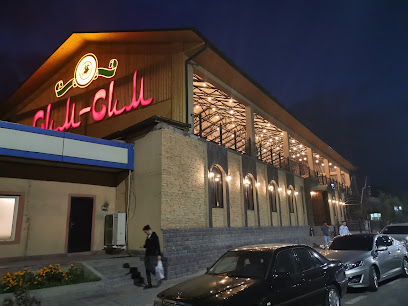
Public Pub
Discover the local charm and vibrant nightlife at Public Pub, Dushanbe's favorite spot for food, drinks, and good company.

Kokteyl' Yeshcho Yakhmos
Discover Kokteyl' Yeshcho Yakhmos, where vibrant cocktails and a lively atmosphere meet the heart of Dushanbe's nightlife.
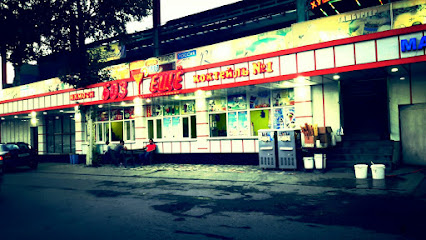
Tokyo
Discover Tokyo's lively karaoke bars for an unforgettable night of singing and fun, steeped in vibrant culture and entertainment.
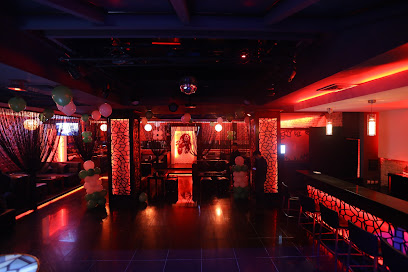
BUNDES BAR BNDS
Experience the vibrant nightlife of Dushanbe at Bundes Bar, where great drinks and a lively atmosphere await you.

Beer House
Experience the vibrant atmosphere of Beer House in Dushanbe, where local brews meet delicious pub fare in a welcoming setting.
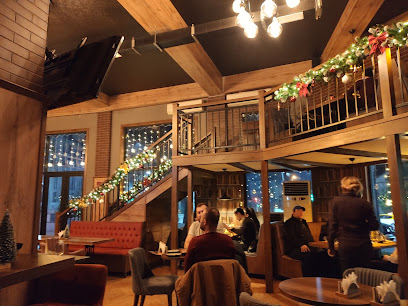
ETNO PUB
Discover the vibrant energy and cultural richness of Dushanbe at ETNO PUB, where local flavors meet a lively atmosphere.
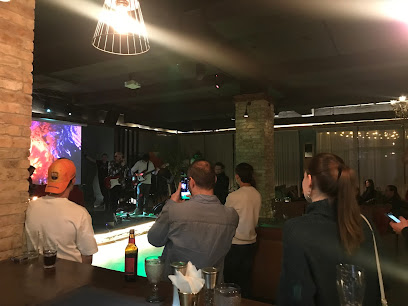
ZAVOD BAR
Experience the vibrant nightlife of Dushanbe at Zavod Bar, where exquisite drinks and great ambiance await you in the heart of Tajikistan.
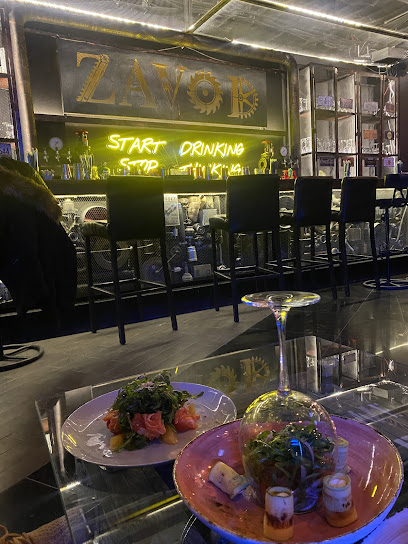
Marsal Lounge & Bar
Experience the vibrant nightlife of Dushanbe at Marsal Lounge & Bar, where exceptional drinks and a lively atmosphere await every visitor.
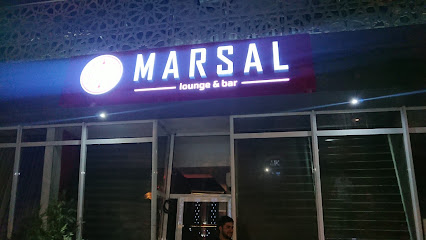
SOMONI LOUNGE
Discover the vibrant atmosphere of Somoni Lounge, a must-visit bar in Dushanbe offering delightful drinks and a welcoming ambiance.

Bro Lounge Dushanbe
Discover the vibrant nightlife and local culture at Bro Lounge Dushanbe, the ultimate bar experience in Tajikistan's capital.
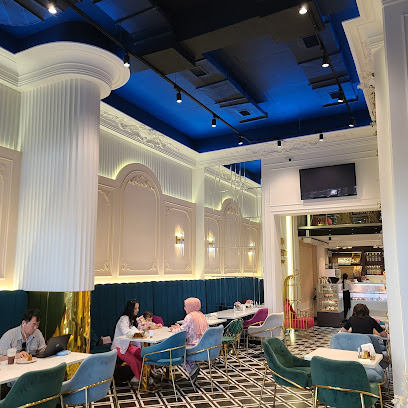
Easy Pub
Discover the vibrant nightlife at Easy Pub in Dushanbe, where local culture meets a lively bar atmosphere and great drinks.

Central Bar
Experience the vibrant nightlife of Dushanbe at Central Bar, where unique cocktails and a lively atmosphere await.

SMOKE-BAR
Discover Dushanbe's vibrant nightlife at SMOKE-BAR, where great drinks and a lively atmosphere come together for an unforgettable experience.
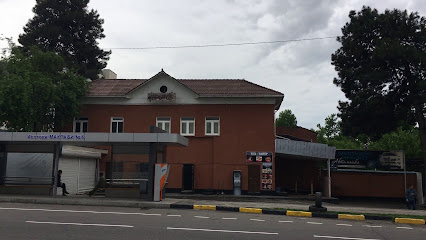
Local Phrases
-
- HelloСалом
[Salom] - GoodbyeХайр
[Khayr] - YesҲа
[Ha] - NoНе
[Ne] - Please/You're welcomeЛутфан
[Lutfan] - Thank youРаҳмат
[Rahmat] - Excuse me/SorryБахшиш
[Bakhshish] - How are you?Шумо чандҳолӣ?
[Shumo chandholi?] - Fine. And you?Хуб. Ва шумо?
[Khub. Va shumo?] - Do you speak English?Шумо англисӣ гап мезанед?
[Shumo anglisii gap mezaned?] - I don't understandМан фаҳм не мекунам
[Man fahm ne mekunam]
- HelloСалом
-
- I'd like to see the menu, pleaseЛутфан, менюро ба мен бефармо
[Lutfan, menyuro ba men befarmo] - I don't eat meatМан гӯшт намехӯрам
[Man gusht namekhuram] - Cheers!Саййона!
[Sayyona!] - I would like to pay, pleaseЛутфан, мехоҳам пулро бедахам
[Lutfan, mehoham pulro bedaham]
- I'd like to see the menu, pleaseЛутфан, менюро ба мен бефармо
-
- Help!Кумак!
[Kumak!] - Go away!Равон шав!
[Ravon shav!] - Call the Police!Пулисро хоҳед занг зад
[Pulisro hohed zang zad] - Call a doctor!Духтурро хоҳед занг зад
[Dukhtrro hohed zang zad] - I'm lostМан гумшудаам
[Man gumshudam] - I'm illМан беморам
[Man bemoram]
- Help!Кумак!
-
- I'd like to buy...Мехоҳам харид кунам...
[Mehoham kharid kunam...] - I'm just lookingМан танҳо гузарам
[Man tanho guzaram] - How much is it?Қадами ҷои он чанд аст?
[Qadami joi on chand ast?] - That's too expensiveОн хеле гурӯҳаст
[On hele guruhast] - Can you lower the price?Шумо метавонед наро паст кунед?
[Shumo metavoned naro past kuned?]
- I'd like to buy...Мехоҳам харид кунам...
-
- What time is it?Қандай соат аст?
[Qanday soat ast?] - It's one o'clockСоат як соат аст
[Soat yak soat ast] - Half past (10)Ним саъат (дасҳ)
[Nim sa'at (dahs)] - MorningСубҳ
[Subh] - AfternoonБегох
[Begokh] - EveningШаб
[Shab] - YesterdayДирӯз
[Diruz] - TodayИмрӯз
[Imruz] - TomorrowПагоҳ
[Pagoh] - 1Як
[Yak] - 2Ду
[Du] - 3Се
[Se] - 4Чор
[Chor] - 5Панҷ
[Panj] - 6Шаш
[Shash] - 7Ҳафт
[Haft] - 8Ҳашт
[Hasht] - 9Нӯҳ
[Nuh] - 10Даҳ
[Dah]
- What time is it?Қандай соат аст?
-
- Where's a/the...?Куҷо...аст?
[Kujo...ast?] - What's the address?Суроға чист?
[Surogha chist?] - Can you show me (on the map)?Шумо метавонед маро нишонида намоед?
[Shumo metavoned maro nishonida namoed?] - When's the next (bus)?Қадами баъдӣ (автобус) кадом вақт аст?
[Qadami badi (avtobus) kadom vaqt ast?] - A ticket (to ....)Билет (ба ....)
[Bilet (ba ....)]
- Where's a/the...?Куҷо...аст?
History of Dushanbe
-
Dushanbe, the capital city of Tajikistan, traces its origins back to a small village that emerged at the crossroads of ancient trade routes. The name 'Dushanbe' means 'Monday' in Persian, referencing the village's bustling Monday market, which became a meeting point for traders and locals from the surrounding regions.
-
In the late 19th century, Dushanbe came under the influence of the Russian Empire, which sought to expand its territory into Central Asia. The city began to grow as Russian settlers and military personnel established a presence. This period marked the beginning of urban development and the introduction of Russian architectural styles.
-
Dushanbe underwent significant changes during the Soviet era, starting from 1922 when it became the capital of the Tajik Autonomous Soviet Socialist Republic. The Soviet government invested in infrastructure, industry, and education, transforming Dushanbe into a modern city. The construction of wide boulevards, public buildings, and cultural institutions reflected Soviet influence.
-
Tajikistan declared its independence from the Soviet Union in 1991, with Dushanbe becoming the capital of the newly independent nation. However, the early 1990s were turbulent times, as the country descended into a civil war from 1992 to 1997. Dushanbe was heavily affected, with significant damage to infrastructure and a decline in economic activity.
-
Following the end of the civil war, Dushanbe entered a period of reconstruction and recovery. Efforts were made to restore damaged buildings and improve public services. In recent years, the city has seen a surge in new development projects, including modern skyscrapers, shopping centers, and cultural venues, reflecting a blend of traditional Tajik and contemporary styles.
-
Dushanbe is home to numerous cultural and historical landmarks. The National Museum of Tajikistan houses extensive collections of artifacts, showcasing the rich history and heritage of the region. The city's architectural jewels include the stunning Haji Yakoub Mosque and the ornate Ismaili Centre. Traditional bazaars like the Green Bazaar offer a glimpse into the local way of life, where visitors can experience the vibrant culture and cuisine of Tajikistan.
-
Dushanbe has established itself as an educational and scientific hub in Central Asia. The city hosts various higher education institutions, including the Tajik National University and the Academy of Sciences of Tajikistan. These institutions contribute to research and development across diverse fields, fostering innovation and academic excellence.
Dushanbe Essentials
-
Dushanbe is accessible by air through Dushanbe International Airport (DYU), which receives international flights from major cities such as Moscow, Istanbul, Dubai, and Frankfurt. From the airport, you can take a taxi or arrange a hotel transfer to reach the city center. Additionally, Dushanbe is connected to other parts of Central Asia by train and bus services, although these options may take significantly longer.
-
Within Dushanbe, you can get around using taxis, which are plentiful and relatively inexpensive. Always negotiate the fare before starting your journey. Public buses and minibuses (marshrutkas) operate on fixed routes and are a cost-effective means of transportation. Car rental services are available for those who prefer to drive.
-
The official currency in Tajikistan is the Tajikistani Somoni (TJS). Credit cards are accepted in major hotels, restaurants, and shopping centers, but cash is preferred in smaller establishments. ATMs are available in Dushanbe, but it is advisable to carry sufficient cash for your needs, especially if you plan to travel to rural areas.
-
Dushanbe is generally a safe city for tourists, but it is wise to take standard precautions. Avoid walking alone at night in poorly lit or unfamiliar areas. Be cautious with your belongings in crowded places. Specific areas with higher crime rates include some of the outskirts of the city; always stay vigilant and aware of your surroundings.
-
In case of emergency, dial 112 for police, fire, or medical assistance. Dushanbe has several hospitals and clinics that can provide medical care. It is recommended to have travel insurance that covers medical emergencies and other unexpected incidents. Familiarize yourself with the location of your embassy or consulate in Dushanbe.
-
Fashion: Do dress modestly, especially when visiting religious sites. Avoid wearing revealing clothing. Religion: Do respect local customs and traditions. Always remove your shoes before entering a mosque. Public Transport: Do be courteous and give up your seat to elderly passengers. Don't eat or drink on public transport. Greetings: Do greet people with a handshake and a slight bow of the head. Eating & Drinking: Do try local dishes and accept food offerings graciously. Don’t refuse hospitality, as it is considered impolite.
-
To experience Dushanbe like a local, visit the local bazaars such as the Green Bazaar, where you can buy fresh produce and traditional Tajik goods. Engage with locals, as they are often friendly and willing to share stories about their culture. Don't miss visiting the National Museum of Tajikistan and Rudaki Park for a deeper understanding of the country's history and heritage. For a unique experience, take a stroll along the city's tree-lined avenues and enjoy traditional tea at a local chaikhana (teahouse).
Trending Landmark in Dushanbe
-
Rudaki Park
-
Navruz Palace
-
Dushanbe Zoo
-
Victory Monument
-
Flagpole
-
The Ismaili Centre, Dushanbe
-
National Museum of Tajikistan
-
Hаji Ya'qub Mosque
-
National Museum of Antiquities of Tajikistan
-
Independence Monument
-
Luchob Memorial Park
-
муҷассамаи Исмоили Сомонӣ
-
Avicenna Square
-
Rudaki Statue
-
Avicenna soviet mosaic
Nearby Cities to Dushanbe
-
Things To Do in Vahdat
-
Things To Do in Tursunzoda
-
Things To Do in Panjakent
-
Things To Do in Istaravshan
-
Things To Do in Shakhrisabz
-
Things To Do in Djizak
-
Things To Do in Jizzakh
-
Things To Do in Samarkand
-
Things To Do in Khujand
-
Things To Do in Mazar-i-Sharif
-
Things To Do in Qarshi
-
Things To Do in Angren
-
Things To Do in Tashkent
-
Things To Do in Chirchiq
-
Things To Do in Navoi













